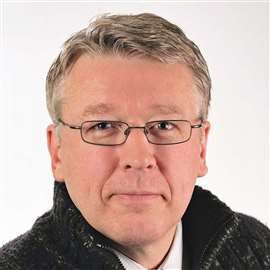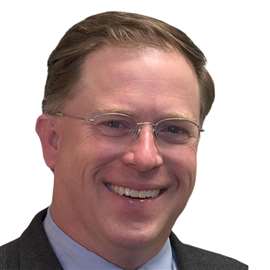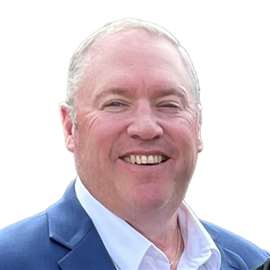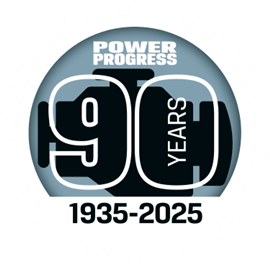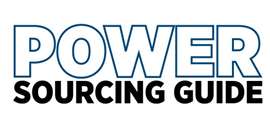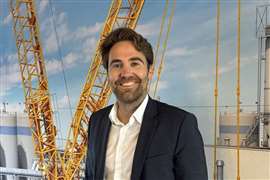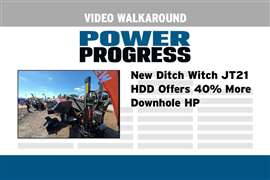A new turbocharger option for high speeds
20 June 2023
Accelleron’s A101-R series designed for wide range of applications
Accelleron said its new A101-R turbocharger series, consisting of two frame sizes, is the company’s answer to the latest turbocharging demands of modern high-speed diesel engines.
The robust and versatile A101-R enables the highest power densities in all fields of applications ranging from constant-speed electric power generation to variable-speed and cyclical off-road equipment such as railway rolling stock, said Michael Gisiger, global head of OEM Sales and Application Engineering at Accelleron.
Gisiger presented a paper on the new turbocharger series at the CIMAC Congress.
“With high speed diesel engines, you have so much variety of applications, everything from locomotive applications, marine, to mining machinery, and to electric power generation,” Gisiger said. “When we look at these high speed applications, you get an unusually large spread of requirements. And the engine builder cannot afford to develop one engine for a unique engine portfolio, but will actually take a multipurpose approach. So where there’s a base engine that can go into a locomotive, or into the electric power application.
“The turbocharger needs to respond to that concept, in terms of not only the engine is extremely versatile, but also turbocharger needs to be equally versatile in order to match to that concept.”
Accelleron’s new turbocharger platform offers the flexibility needed for the diverse application portfolio of modern large high-speed diesel engines while enabling the standardization efforts pursued by the engine builders, he said.
The product concept is based on a common core unit consisting of a newly developed turbine stage with enhanced part load performance, a robust bearing and shaft sealing system and a solid bearing housing to turbine housing bolted joint while for the compressor side a modular design approach has been taken. For example, the compressor can be specified for high pressure single stage turbocharging systems, or alternatively for 2-stage turbocharging systems, when higher overall pressure ratio is required. Hence, the engine’s turbocharging system defines, to a large extent, the operation characteristics of the engine.
Turbocharging systems of modern high-speed diesel engines are required to deliver high pressure ratios over a wide volume flow range while providing superior efficiency, thereby enabling low fuel consumption and keeping thermal loading of the engine in check. Some applications with demanding requirements – e.g., where a highly rated torque curve or strong dynamic response is needed or where altitude conditions are severe – surpass the capabilities of single-stage turbocharging and hence need more sophisticated systems such as regulated 2-stage or sequential turbocharging systems.
To define what should be part of the A101-R standardized core versus what should be part of a differentiated package, a close look was taken at the different engine market subsegments in terms of size, turbocharger technical requirements and customer value drivers.
The first subsegment considered is “Electrical Power Generation (EPG)” and its three main types of constant-speed applications (standby, prime and continuous), which typically account for about half of the yearly high speed diesel engine production. The three types differ mainly in aspects such as engine load factor, commercial durability and emission regulation. A key value driver in this subsegment is power density, using single-stage turbocharging in order to reduce CAPEX per kW. The second subsegment is referred to as “Marine” and accounts for about a third of the engine production. It aggregates all types of marine applications from single fixed-pitch propeller to combined-mode marine propulsion systems, typically covered by sequential turbocharging systems. Furthermore, Oil & Gas applications are also included in this cluster, based on similar technical requirements. Common value drivers are durability and serviceability for cost efficiency over the life cycle. Finally, the third subsegment, “Mining,” includes all moving off-road equipment ranging from large off highway mining trucks and excavators to railway rolling stock. These applications are characterized by a high number of load cycles and a demanding torque curve, in combination with variable ambient operating conditions in terms of temperature and altitude. Hence, durability, power density and the flexibility to apply turbochargers also in a 2-stage arrangement are important value drivers in this particularly demanding subsegment.
The common turbocharger requirements across these three subsegments then lead to what the company calls the turbocharger Core Unit, which is a standardized platform within the product concept. At the same time, the dedicated requirements define the application-specific features that are part of the application packages. The Core Unit is the backbone of the turbocharger platform and is structured around the turbine stage and the bearing system.
The Core Unit is designed to provide the following key functionalities:
- New turbine stage that is optimized on the mechanical side for high LCF robustness and on the thermodynamic side for part-load oriented performance, stable across a wide range of effective flow areas.
- Bearing to turbine-casing bolted joint for mechanical stability, ensuring a stiff, gas-tight and durable connection even when operated through many deep thermal cycles.
- Robust bearing systems, enabling component flexibility, including 2-stage configurations, for extended time between overhaul while considering high frequency of start/stop cycles.
- Shaft sealing systems for oil tightness and limited amounts of gas blow-by, even when applied in demanding turbocharging systems such as sequential turbocharging.
- Boreless compressor wheel threaded connection for high air-side flexibility to allow future upgrades with enhanced compressor stages.
Differentiated packages around standardized Core Unit allow tuning of the turbocharger to the application specifics while ensuring a competitive turbocharging solution, the company said.
For the most demanding high-altitude conditions the A101-R can be arranged in 2-stage systems in 2+1 and 1+1 architectures. The specific HP compressor features the necessary wide map characteristic. The new turbine stage enables highest power density based on its excellent LCF robustness and high part-load performance. Additional features, such as the new turbine-side bolted joint and the enhanced shaft sealing, have been developed and incorporated to make the A101-R reliable and durable. The A101-R responds through its standardization to the requirements of engine-builders pursuing a multi-purpose engine strategy and at the same time to the current and future needs of engine operators through its performance, durability and serviceability.
The development of both frame sizes is in the final stages to have the commercial product release of the water-cooled units already by mid-2023. The oil-cooled versions are planned to be released at the end of 2023. Prototypes for engine testing are already available on request.
POWER SOURCING GUIDE
The trusted reference and buyer’s guide for 83 years
The original “desktop search engine,” guiding nearly 10,000 users in more than 90 countries it is the primary reference for specifications and details on all the components that go into engine systems.
Visit Now
STAY CONNECTED




Receive the information you need when you need it through our world-leading magazines, newsletters and daily briefings.
CONNECT WITH THE TEAM

